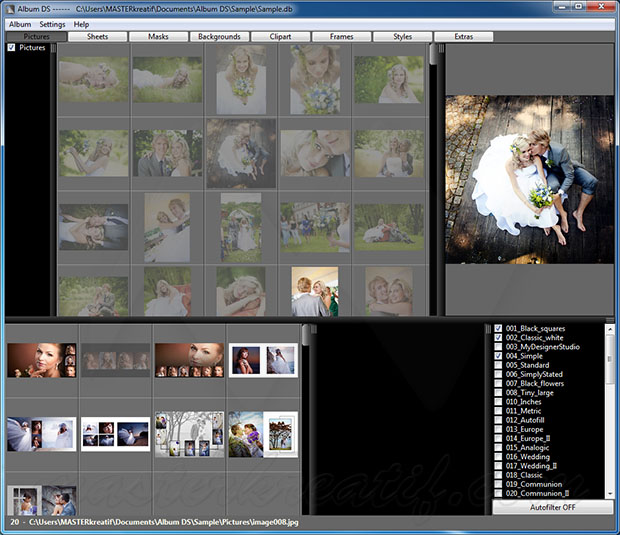

- #Album design vs album ds how to
- #Album design vs album ds pdf
- #Album design vs album ds software
- #Album design vs album ds free
InDesign has limited capabilities to modify/enhance images, but beyond that, you would need to use another software (most likely Photoshop) to further process the image. You might not have the money or time budget for either.

#Album design vs album ds how to
If you don’t own InDesign, you would need to spend money to purchase the software, and you would need to spend time in learning how to use it. Most photographers don’t know (or own) InDesign:
#Album design vs album ds pdf
Many press book companies work with PDFs directly (think Blurb) and have strict requirements for PDF output. Just as Photoshop is very comfortable with JPEGs, InDesign is very comfortable with PDFs. Want to re-arrange the position of the pages? Simply drag them into the right order….no need to rename multiple files. Thus, your entire album layout is contained in a single file. Lastly, and perhaps most useful, you can use another software (or person/company) to modify the album images and have InDesign automatically “re-link” the modified images into your layout.Ī single file can contain multiple page layouts:Ī single InDesign file can hold multiple pages.
#Album design vs album ds free
Second, feel free to size the image up and down, and back up again…it doesn’t matter since InDesign is not utilizing the original high-res image until you export. First, the file sizes are dramatically smaller – thus, allowing you to manipulate the layout faster. When you place an image into InDesign, the software only places a low-res version of that image into the document, and then stores the path to the original image. Ever tried to populate a grid of 16 photos in Photoshop? Wrap a paragraph of text around an image? These are child’s play for InDesign. With a layout tool, you get access to many features that Photoshop users would die for. To re-arrange your layout, you would need to rename multiple files.Ī simple statement, yet it has powerful undertones. Thus, if you have 50 spreads, you will end up with 50 files. (more on this when we discuss InDesign below)Įach Photoshop PSD document stores only a single page (spread) for your layout. 2) If you decide to use another software (or another person/company) to modify the images, you would need to manually replace the old images with the new modified images. There are two side-effects to this: 1) The document size will be very large after you place a few images in. When you place an image into a Photoshop canvas, it will actually place all the image data into that document. (We hope you already know why you should not size an image up once you sized it down….). Size an image down within Photoshop and the software will remove actual pixel information….thus, if you made a boo-boo and downsized an image during layout, you would need to drag in the original image again.

Once images are sized down, you can’t (shouldn’t) size it up again: Thus, many useful tools that one would expect to use during the design process are either missing or hard to use within Photoshop (e.g. Layout capabilities limited since it was not built as a layout software:Īs mentioned above, Photoshop is a software built to handle bitmaps – it was not built to specialize in layouts.

Even with the latest InDesign CS5, users are not able to select image interpolation methods for their JPEG exports. InDesign, on the other hand, has a history of limitations (and difficulties) in generating JPEGs….so much so that most advanced users chose to export to PDF first before sending the PDF document into Photoshop to do a final JPEG conversion. Most album companies and labs require you to submit JPEG files for printing, and Photoshop has scores of options in generating JPEG images. Furthermore, your design style might require you to create complex cross-gradient fades and other special effects….again, you can do it all without interrupting your design workflow.ĭigital images are bitmaps, and Photoshop is a software built to handle bitmaps. If you design using Photoshop, all the image enhancement tools are right there for you to use. These adjustments can be as simple as brightness or color adjustments, or as complex as swapping people’s heads. With Photoshop, editing and retouching images can be done directly:ĭuring the album design process, chances are you might need to adjust some of your images. This is also probably why many album companies offer their album templates in a PSD format. This is a big “pro”, because there is no need to invest more time and money into something new. Most photographers already own (and know how to use) Photoshop. Most photographers already own a copy and know how to use it:


 0 kommentar(er)
0 kommentar(er)
